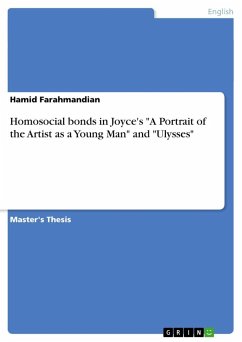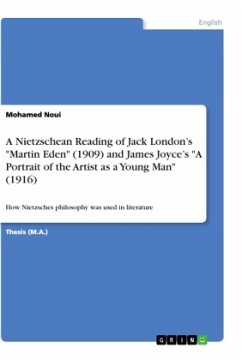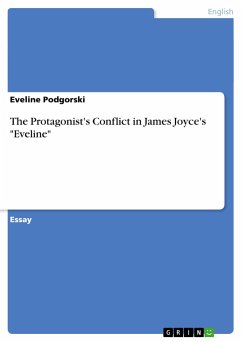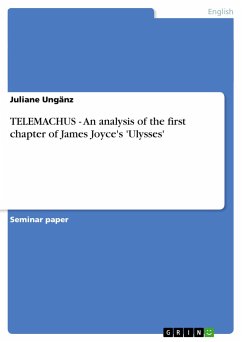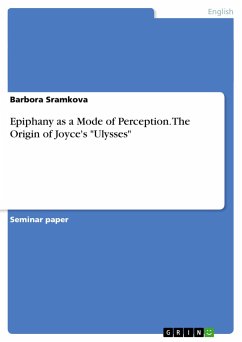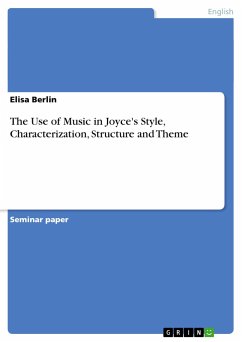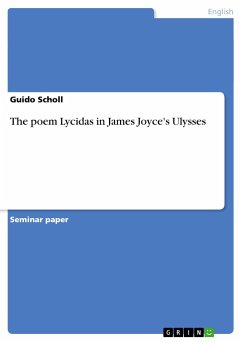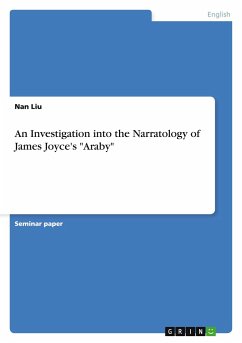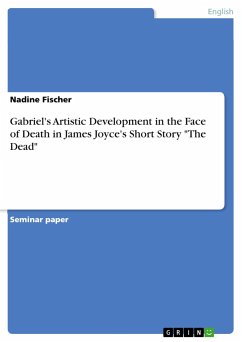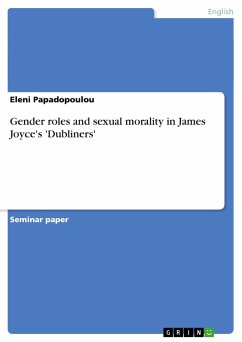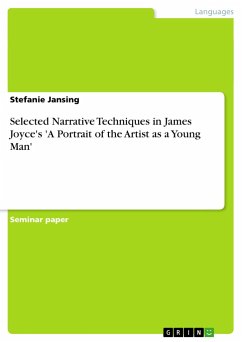
Selected Narrative Techniques in James Joyce's 'A Portrait of the Artist as a Young Man'

PAYBACK Punkte
0 °P sammeln!
Seminar paper from the year 2007 in the subject Didactics - English - Literature, Works, grade: 1,7, University of Münster, language: English, abstract: In James Joyce's novel "A Portrait of the Artist as a Young Man" a variety of narrative techniques is used. In this research paper I want to explore how the use of different narrative techniques correlates with and indicates the protagonist's development towards both an artist and an autonomous adult. Except of the concluding diary entries, the novel is narrated by a third-person narrator who has got a limited point of view since he is focali...
Seminar paper from the year 2007 in the subject Didactics - English - Literature, Works, grade: 1,7, University of Münster, language: English, abstract: In James Joyce's novel "A Portrait of the Artist as a Young Man" a variety of narrative techniques is used. In this research paper I want to explore how the use of different narrative techniques correlates with and indicates the protagonist's development towards both an artist and an autonomous adult. Except of the concluding diary entries, the novel is narrated by a third-person narrator who has got a limited point of view since he is focalized through Stephen. The narrator presents Stephen's consciousness and activities in various ways; an important aspect about his narration is that he persistently adapts his style to Stephen's idiom and mood. In some passages the narrator reports almost objectively on events, however, often he renders Stephen's consciousness, for which he uses different narrative techniques. Since Dorrit Cohn is thought to be one of the most important researchers on the field of narrative techniques concerning the presentation of consciousness, I will base this research paper on her definitions. Cohn distinguishes three ways a third-person narrator can use for rendering a person's consciousness: psycho-narration, narrated monologue and quoted interior monologue, all of which are used in the novel. I will focus on psycho-narration and narrated monologue since these are the techniques predominantly used. Psycho- narration is the narrator's description of a character's thoughts and feelings, thus, it is the most indirect way of rendering a character's consciousness. The third-person reference and the tense of narration are maintained. The presence of a narrator is marked since a verbum dicendi is always used. Narrated monologue uses the third person singular and the preterite as well; however, at the same time the syntactical structure remains that of direct discourse with exclamations, questions, repetitions, interjections and exaggerated emphases. The effect of narrated monologue is to reduce as far as possible the distance between the narrator and the character existing in all third person narrations. Since psycho- narration and narrated monologue use a third-person narrator and the same time span, the two techniques can alternate without perceptible transitions. As a result, the narrator can weave in and out of the character's thoughts and the distance between narrator and character can be eliminated.




